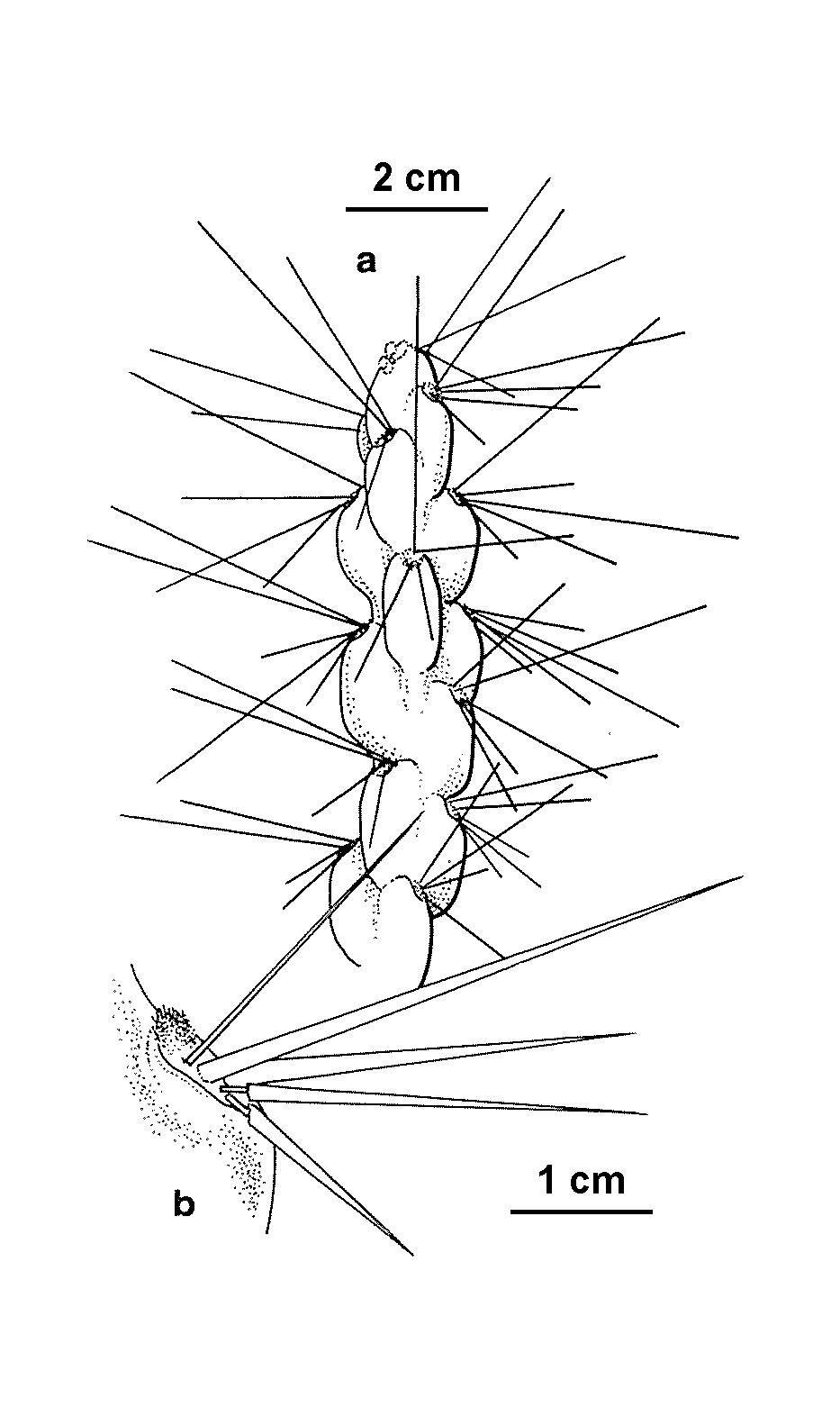Cylindropuntia tunicata
(Lehm.) F.M.Knuth Brown-spined Hudson PearLow, spreading shrub, 30–60 cm high, trunk usually absent. Terminal cladodes cylindric, 5–25 cm long, 2.5–3 cm wide, tuberculate, glabrous, dull grey-green, readily disarticulating; tubercles prominent, laterally compressed, 1.5–3 cm long, 3.5–6 mm wide, 7.5–10.5 mm high; areoles 1.5–2.5 cm apart, apical on tubercles, filled with short white wool and small pale brown glochids; spines 4–10 per areole, spreading, to 5 cm long, 0.6–1.1 mm wide near base, reddish-brown, yellow-brown apically, each covered by a yellowish, translucent, papery sheath c. 1.5 mm diam. Flowers 2.5–3.5 cm diam., yellow; staminal filaments yellow; style white, stigma pale yellow; hypanthium tuberculate. Fruit more or less barrel-shaped, tuberculate c. 2.5 cm long, 1.5 cm diam., deeply depressed apically, spineless, yellow suffused red. Flowers late spring–summer.
MuM. Also naturalised in WA, SA, Qld., NSW. Indigenous to Mexico and possibly Texas. It also occurs in Ecuador and Chile, where it is probably naturalized. Known in Victoria only from Natya (between Swan Hill and Robinvale), and Gunners Tank Bush Reserve/roadsides (near Underbool), but reported also from Mittyack (Hosking et al. 1988).
Stajsic, V.; Carr, G. W. (1996). Cactaceae. In: Walsh, N.G.; Entwisle, T.J., Flora of Victoria Vol. 3, Dicotyledons Winteraceae to Myrtaceae, pp. 119–129. Inkata Press, Melbourne.
 Spinning
SpinningAnderson, E.F. (2001). The Cactus Family. Timber Press.
Benson, L. (1982). The cacti of the United States and Canada. Stanford University Press.
Chinnock, R.J. (2015). Feral opuntioid cacti in Australia: Part 1. Cylindrical-stemmed genera: Austrocylindropuntia, Cylindropintia and Corynopuntia. State Herbarium of South Australia.



